|
|
Your Details
|
|
Your Details
GemSelect December 2013 Newsletter: Amazing Gemstone Optical PhenomenaPhenomenal gemstones which display unusual optical properties are extremely rare and quite unusual. Optical phenomena results from the way light interacts or interferes with the structural anatomy of a gemstone. The interaction or interference can be in the form of light scattering, reflection, refraction, diffraction, absorption or transmission. There are many forms of gemstone phenomena; some are quite common and rather simple and subtle, while others are considerably rare, incredibly striking and easily noticeable. 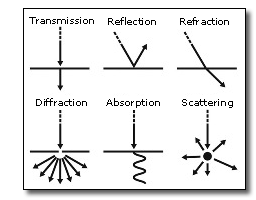
Light Beam Behavior
For many, the subject of gemstone optical phenomena can be very confusing not only with the how and why, but also with the terminology we use today to describe such optical effects. As most of us know far too well, understanding gemstone terminology is neither simple nor straight-forward, especially due to the fact that many gemological terms aren't even recognized by spellcheckers or even Merriam-Webster to say the least. In our newsletter this month, we hope to help clarify and shed some light into the mystical world of gemstone phenomena and the confusing terminology we use today. Adularescence Back to Top
Adularescence is an optical effect named after 'adularia', the historical name once used to refer to moonstone. The effect is owed to light interference caused by layered deposits of differing materials. The adularescence effect is often described as an internal surge of undulating light which appears to float about like a moveable cloud. The glow seems to originate from within the stone rather than the surface. Often times, the term 'sheen' is used to describe this effect, especially with rainbow moonstone. 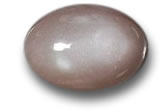
Moonstone Gem
Moonstone is by far the most famous for adularescence, but many other gems can exhibit this phenomenon as well, including opal; though opal adularescence is typically referred to as 'opalescence'. Less intense or 'mild adularescence' occurs more as a general scattering of light which results in a slightly hazy or milky appearance in otherwise non-hazy stones, very frequently seen in common opal and rose quartz. Aventurescence Back to Top
The aventurescent effect is a sparkling or glittering effect caused by the reflection of light from tiny disc-like inclusions, typically composed of mica, copper or hematite. The terms 'schiller' or 'sheen' are very often used to describe aventurescence. 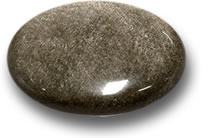
Obsidian Gemstones
Aventurine quartz is the best-known of aventurescent gems (and the reason why the phenomenon was named aventurescence). Even so, aventurescence can actually occur in a variety of other gemstones too, including various feldspars such as sunstone and andesine-labradorite. A variety of obsidian known in the trade as 'gold-sheen obsidian' is also known to exhibit an extremely attractive aventurescence. Cat's Eye Chatoyancy Back to Top
Cat's eye chatoyancy is the unique reflection of light concentrated from parallel needle-like inclusions aligned within a single axis point. This results in a highly-focused band of light that appears as an 'eye' when a stone is properly oriented and cut en cabochon. 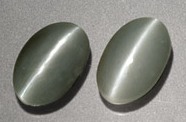
Cat's Eye Gemstones
Some especially high-quality cat's eye can exhibit a 'milk and honey' effect, which can be seen when moving a light to one side of the gem and concentrating it laterally; this results in one side appearing dark, while the other side appears light. Some rare specimens may also exhibit an ability to 'split eyes' when exposed to two different direct light sources. As the two lights shift angles, a single eye splits into two, each following one of the lights; this effect resembles an 'opening and closing eye' effect. Chrysoberyl cat's eye is the most famous and original cat's eye gem, but this remarkable phenomenon can also occur with quartz, tourmaline, apatite, beryl and moonstone. Simple Chatoyancy Back to Top
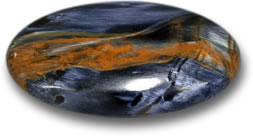
Pietersite Gemstones
Simple chatoyancy is also the result of parallel microscopic needle-like inclusions, but in the case of simple chatoyancy, the silky inclusions are not well-organized nor are they properly oriented to focus and concentrate the light into a single visible band. As a result, simple chatoyancy appears as multiple reflections of small silky and thread-like streaks of light. With only slight adjustments to its viewing angle, simple chatoyancy can cause a stone to change from light to dark and back to light again. Tiger's eye, pietersite, seraphinite and charoite are the best-known gems that possess simple chatoyancy. Some very rare specimens of sapphire and ruby may also exhibit slight traces of simple chatoyancy which are caused by fine silk-like inclusions. Asterism Chatoyancy Back to Top
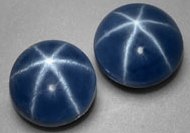
Natural Star Gemstones
The phenomenon of asterism (star) chatoyancy is technically just an expanded form of cat's eye chatoyancy. Like the cat's eye effect, asterism is also the result of parallel-aligned fibers and inclusions, but rather than aligning across a single axis point, they align along two or more axis points. The intersecting axis points with perfectly aligned inclusions results in a unique reflection of light in the form of a 4 or 6-rayed star. Star specimens must be properly oriented and cut en cabochon with a high dome in order to maximize the desirable asterism. Star sapphire and star ruby are the most popular 'star gemstones', but there are actually many other star gems available, including star diopside, star garnet, star rose quartz and star moonstone. Iridescence Back to Top
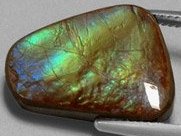
Iridescent Gemstones
Iridescence is a unique multicolor rainbow-like effect caused by light diffraction. As light passes through different layers of material with differing refractive indices, a prism effect causes light to separate into various spectral colors. Prismatic iridescent effects can also be caused by internal fractures and cleavage. Although iridescence is the most common optical phenomenon found in gemstones, it's also undoubtedly one of the most mesmerizing of effects. Iridescence can be seen in many different types of gemstones, including fire agate, ammolite and rainbow pyrite. Perhaps the most well-known forms of iridescence are the 'play of color' seen in precious opal, and the delicate shifting in fine pearl, often referred to as 'the orient'. Labradorescence Back to Top
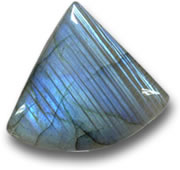
Labradorite Gemstones
The labradorescent effect is caused by diffraction of light through fine platelets of differing compositions, as well as the presence of minute inclusions. The labradorescent effect is highly directional and produces stunning metallic spectral colors of bright blue, violet, green, red, orange and yellow-gold. Labradorescence is a form of iridescence, but the term is only used when referring to labradorite gemstones owing to the uniqueness and intensity of this remarkable phenomenon. The labradorescent effect is sometimes referred to as a 'schiller' or 'sheen'. At some angles the schiller is completely invisible and dull, while other angles reveal an extremely vivid and absolutely remarkable schiller. Pleochroism Back to Top
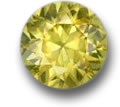
Sphene Gemstones
Pleochroism is the ability for gemstones to display different colors or depth of color when viewed from different angles. The phenomenon is caused by differing absorption of light rays in doubly refractive crystals. This means that singly refractive gemstones, such as spinel and diamond cannot exhibit any level of pleochroism. Dichroic (dichroism) is a term used to specify two color pleochroic gems (kunzite), while trichroic (trichroism) is often used to refer to gems that can display three colors (andalusite). Pleochroic effects can be enhanced through specific orientation and in many cases, can be reduced or minimized through proper cutting as well. This is often done to show the more attractive of colors a gemstone may exhibit. Some of the most popular pleochroic gems include andalusite, iolite, kyanite, kunzite, sphene and tanzanite. Color Change Back to Top
Color change is one of the rarer and more intriguing of gemstone optical phenomena. Unlike pleochroism, color change ability does not rely on viewing angle. With the color change phenomenon, colors can change when gems are viewed under different types of light such as daylight or incandescent light. Only rare gems which formed with multiple light transmission windows can exhibit the ability to color change (similar to the concept of doubly refractive crystals and pleochroism). 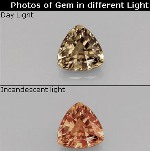
Natural Color-Change Gems
To help understand the phenomenon, a red gemstone appears red because it absorbs all frequencies of light except for red (one transmission window) - but a color change gemstone that absorbs all frequencies except for blue and red (two transmission windows) will appear blue when light is rich in blue wavelengths (fluorescent), and will appear red when the light is rich in red wavelengths (incandescent light). Although alexandrite is the best-known of color change gemstones (hence the term 'alexandrite effect'), the color change phenomenon can also occur in rare specimens of sapphire, garnet and diaspore-zultanite. Tenebrescence Back to Top
Tenebrescence is the rarest of all optical phenomena. It is the unique ability for certain gemstones to change color when exposed to sunlight and for the process to reverse again once the light reverts. Another term for this phenomenon is 'reversible photochromism'. 
Tenebrescence in Gems
Tenebrescence occurs in only a few minerals, one of which includes a rare variety of sodalite known as hackmanite. Hackmanite appears violet when it's first mined, but once exposed to sunlight, the color quickly fades to grayish or greenish white. When placed back into a dark place for an extended period of time, the violet color slowly returns. The remarkable optical effect of tenebrescence can be repeated indefinitely and never fails to inspire awe in the viewer. Phenomenal Gems make Phenomenal Holiday Gifts! Back to Top
Gemstones with optical phenomena are truly one-of-kind creations. They make excellent gifts for both novice and veteran gem collectors. Best of all, many phenomenal gems are surprisingly very affordable! We have a huge selection of pleochroic gemstones, gems with simple chatoyancy, cat's eye gems, star gemstones, gemstones with schiller and gemstones with sheen - and many are available for less than $25! Click here to view thousands of gems from just $10 to $25! Shipping Tips for the Holiday Season Back to Top
During the holiday season, courier services and post offices around the world are busier than ever. Although we will take special measures to ensure you receive orders promptly and reliably, there are still a few things you can do to help ensure your gems will be delivered on time. We strongly recommend opting for our express service shipping for all of your holiday gifts. It's fast! Typically, shipments arrive in just 3 to 4 days to nearly anywhere in the world. Also, if you require gemstone certification, please allow an additional 5 to 10 working days to complete the lab testing and certification (in addition to the transit time). We hope you found this article interesting. If you have any comments or suggestions, just drop us a line. We really do read and reply to every single email we receive. Please make sure you can receive email from help@gemselect.com. Lastly, we would like to wish you and all of your loved ones the best in health, wealth and success for the upcoming holidays as well the New Year! Happy Holidays! |
